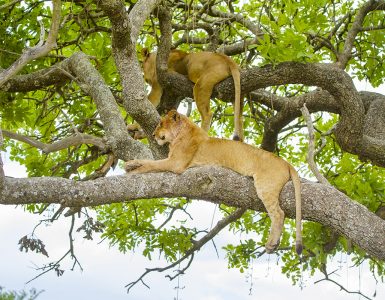The kangaroo’s most iconic feature—its powerful, efficient hopping—offers our first lesson in sustainable focus. Unlike humans who exhaust themselves attempting to maintain constant high attention across multiple tasks, kangaroos employ a brilliant energy-conservation strategy. Their unique locomotion actually stores elastic energy in their tendons with each landing, which then releases to power the next jump—requiring significantly less effort than conventional running. Similarly, sustainable human focus doesn’t mean maintaining constant peak concentration for hours; it involves strategic energy management through oscillation between periods of intense attention and brief recovery. Just as a kangaroo’s hop includes both contact and flight phases, effective cognitive work requires both concentrated effort and strategic disengagement. The next time you find yourself struggling to maintain focus, consider adopting what productivity experts now call “kangaroo time”—50-minute deep work intervals followed by 10-minute recovery hops. This rhythmic approach acknowledges that sustained attention isn’t about constant strain but about finding your natural cognitive bounce.
“Neurodiversity may be every bit as crucial for the human race as biodiversity is for life in general. Who can say what form of wiring will prove best at any given moment? Cybernetics and computer culture, for example, may favor a somewhat autistic cast of mind.” — Harvey Blume
The Power of Directional Commitment
Watch a kangaroo in motion and you’ll notice something remarkable: once they commit to a direction, they rarely make sudden course corrections. Their unique physiology makes lateral movements energetically expensive, pushing them toward committed forward momentum. This directional persistence offers a perfect metaphor for effective focus in an age of endless potential pivots. The modern knowledge worker typically has dozens of possible tasks vying for attention at any moment, creating the cognitive equivalent of trying to hop sideways—energy-intensive and inefficient. Neuroscience research confirms that rapid context-switching can reduce productivity by up to 40%, as our brains aren’t designed for the constant reorientation we subject them to. Kangaroos, by contrast, exemplify what psychologists call “implementation intention”—they decide where they’re going, then commit their unique biomechanical system fully to that path. The lesson? Pre-commit your cognitive resources by designing focused work environments that make directional changes appropriately costly, thereby discouraging the temptation to hop between tasks unnecessarily.
The Pouch Priority System
Female kangaroos display perhaps the ultimate prioritization system: the specialized pouch that protects and nourishes their developing joeys. This remarkable adaptation ensures that regardless of external circumstances, the kangaroo’s most important project—raising her young—has a secure, dedicated environment. This marsupial masterclass in priority-protection stands in stark contrast to how most humans handle their most important work. We routinely expose our highest-value cognitive tasks to constant interruption, equivalent to a kangaroo with a pouch full of holes. Productivity research increasingly shows that our most important thinking requires protected incubation, not unlike a developing joey. Knowledge workers who implement what organizational psychologists call “attention pouches”—protected time blocks with strict boundaries against interruption—report significantly higher creative output and satisfaction. The kangaroo doesn’t apologize for her biological boundaries around her developing offspring; similarly, sustainable focus requires unapologetic protection of your cognitive environments during developmental stages of important projects.
The Balanced Vigilance Approach
Kangaroos have evolved a fascinating attentional strategy incorporating both vigilance and rest. Within a mob (yes, that’s the delightful collective term for a group of kangaroos), individuals take turns scanning for predators while others graze more casually. This distributed attention system allows the group to maintain necessary vigilance without any individual suffering vigilance fatigue. Contrast this with the modern human approach: we attempt to maintain constant high alert across email, messaging, social media, news, and work tasks simultaneously, creating the cognitive equivalent of being the only vigilant kangaroo in a mob of thousands. This unsustainable hypervigilance leads directly to the attention fatigue epidemic plaguing knowledge workers. The marsupial alternative suggests implementing what attention researchers call “vigilance scheduling”—designating specific times for monitoring communication channels rather than remaining perpetually alert. Studies show that batching potential interruptions into scheduled blocks can reduce stress hormones by up to 38% while actually improving responsiveness to genuinely urgent matters.
The Tail Balance Factor
Perhaps the most overlooked focus lesson from kangaroos lies in their remarkable tail—a crucial counterbalance that enables their impressive locomotion. Without this counterweight, their distinctive movement would be impossible. Yet many humans attempt cognitive “hopping” without establishing any equivalent balancing mechanism. In attention economics, your counterbalancing “tail” is composed of rejuvenating activities that appear unrelated to productivity but actually make sustained focus possible: sleep, exercise, social connection, and contemplative practice. Research consistently shows that knowledge workers who incorporate these counterbalancing elements outperform those attempting to maintain continuous focus without adequate counterweight. Just as a kangaroo’s tail comprises nearly a third of its weight, effective cognitive performance may require dedicating a similar proportion of your time to these seemingly “unproductive” but essential balancing activities. The next time someone questions your commitment to adequate sleep or regular exercise breaks, simply explain you’re developing your cognitive tail—the counterbalance that makes your productive leaps possible.
Monday Morning Meditation Techniques for Business Owners
The Sustainable Success Sound Current – Complete your practice by chanting “Sat Nam” (truth is my identity) 3 times, connecting the sound vibration to your core business values. In the Kundalini tradition, this final affirmation aligns your focus with your authentic purpose, ensuring your day’s productivity serves your deeper mission rather than just reactive urgency.
The Marsupial Breath – Begin with three minutes of long, deep breathing through the nose (ratio of 4:4:2 – inhale:hold). Visualize your breath creating a protective pouch around your highest priorities for the day, setting boundaries against lower-value distractions. This activates the parasympathetic nervous system while establishing intentional focus boundaries.
The Bias-Breaking Bounce – Sit comfortably, palms facing upward on knees. For two minutes, gently bounce your torso up and down while mentally listing potential cognitive biases affecting your decision-making (confirmation bias, sunk cost fallacy, etc.). The physical movement disrupts habitual thinking patterns while the awareness practice creates space for more neutral observation.
The Revenue Root Lock – Apply a gentle mulbandh (root lock) by slightly contracting pelvic floor muscles while contemplating your business’s foundational value proposition. This ancient technique symbolically connects basic survival energy (represented by lower chakras in Kundalini tradition) with your entrepreneurial purpose, neutralizing scarcity mindsets that cloud strategic thinking.
The Stakeholder Sweep – With eyes closed, move your awareness slowly through your body while mentally acknowledging each stakeholder in your business ecosystem (clients, employees, vendors, investors). This practice cultivates what Kundalini tradition calls “expanded sensitivity” and counteracts the tunnel vision that often characterizes Monday morning reactivity.
The Prosperity Projection – With arms extended at 60° angles, palms facing forward, visualize energy flowing from your heart center simultaneously to your clients and to your business operations. In Kundalini philosophy, this position activates the Jupiter energy center (index finger) associated with expansion and opportunity while physically opening the chest area associated with abundance consciousness.
The Intuitive Insight Timer – For precisely 108 seconds (a sacred number in many traditions), rapidly tap your fingertips together while focusing on an unresolved business challenge. According to Kundalini principles, this stimulates the nerve endings that connect to different brain regions, integrating analytical and intuitive processing centers.
The Competitive Compassion Kriya – Place your left hand over your heart and right hand palm-up on your knee. Mentally name your top competitors while sending them genuine wishes for appropriate success. This counterintuitive practice helps neutralize the scarcity mindset that often constricts creative thinking when focusing on competitive markets.



































